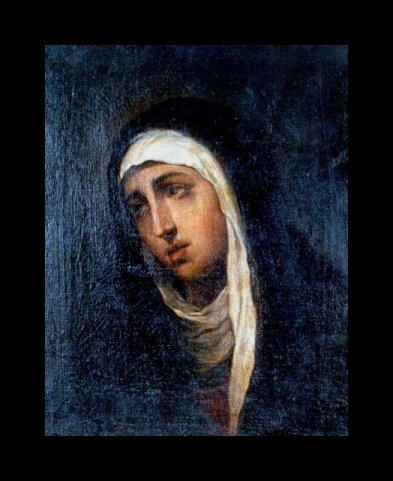Jose Nicolas de la Escalera (1734-1804)
Get a De La Escalera Certificate of Authenticity for your painting (COA) for your De La Escalera drawing.
For all your De La Escalera artworks you need a Certificate of Authenticity (COA) in order to sell, to insure or to donate for a tax deduction.
Getting a De La Escalera Certificate of Authenticity (COA) is easy. Just send us photos and dimensions and tell us what you know about the origin or history of your De La Escalera painting or drawing.
If you want to sell your De La Escalera painting or drawing use our selling services. We offer De La Escalera selling help, selling advice, private treaty sales and full brokerage.
We have been authenticating De La Escalera and issuing certificates of authenticity since 2002. We are recognized De La Escalera experts and De La Escalera certified appraisers. We issue COAs and appraisals for all De La Escalera artworks.
Our De La Escalera paintings and drawings authentications are accepted and respected worldwide.
Each COA is backed by in-depth research and analysis authentication reports.
The De La Escalera certificates of authenticity we issue are based on solid, reliable and fully referenced art investigations, authentication research, analytical work and forensic studies.
We are available to examine your De La Escalera painting or drawing anywhere in the world.
You will generally receive your certificates of authenticity and authentication report within two weeks. Some complicated cases with difficult to research De La Escalera paintings or drawings take longer.
Our clients include De La Escalera collectors, investors, tax authorities, insurance adjusters, appraisers, valuers, auctioneers, Federal agencies and many law firms.
We perform Jose Nicolas De La Escalera art authentication, appraisal, certificates of authenticity (COA), analysis, research, scientific tests, full art authentications. We will help you sell your Jose Nicolas De La Escalera or we will sell it for you.
.jpg)
The First Cuban Painter
Jose Nicolas De la Escalera is considered to be the first true Cuban painter. Perhaps there were others before him to, but Escalera’s work has stood the test of time, and he is believed to be the oldest known Cuban painter. Little is known about Escalera today, but certainly, he received training from one of the many artists or European artistocrats which streamed into Europe during the later half of the 1600’s.
Before his time, any art that existed on the island was primitive in nature by self-taught “mulattos” or was graphic art used for the production of tobacco ads. It was Escalera that started the beginnings of non-commercial painting and brought art to this island nation. Before Escalera, there were many European, non-native artists that would produce art on the island. Escalera was truly the first Cuban to produce work in the Classic style.
Much of the work that exists today of Escalera’s are portraits and religious imagery. Some have said that his painting is in the Cuban baroque style, and mostly grace the walls of churches and cathedrals in Cuba. One may compare him as the Cuban equivalent to Michelangelo, not necessarily because of style, but because of their similarities in subject matter and innovation in the world of art. Escalera uses a style which suggests European Classical styling, and this is echoed in his color choices, as well as subject matter.
While painting under the watchful eye of the clergy, Escalera was said to have had little control over the styles of his paintings. He would be commissioned for these jobs, and would paint in a style to please his patrons. However, Escalera would have a very playful color palate at times, which would echo in the clothing on the subjects in his paintings.
When Escalera was not commissioned for murals and art work, he would paint portraits of the early Cuban aristocracy. By doing this, Escalera was also documenting life on this somewhat remote country in some of their earliest known history. Escalera was also the first to paint a picture of a “negro” slave, which appeared in a painting in the Santa Maria del Rosario church.
To find a piece of Escalera’s work would not only be worthy artistic find, but a priceless piece of Cuban history as well. Today, Escalera’s work is housed at the Museuo Nacional de Bellas Artes in Havana, as well as in churches throughout Cuba. Could you own a historic piece of art from Jose Nicolas De la Escalera? The possibilities are endless. We would be glad to help you authenticate a piece of art from this original Cuban artist, the one who started it all in the Cuban art world.

Reviews
1,217 global ratings
5 Star
4 Star
3 Star
2 Star
1 Star
Your evaluation is very important to us. Thank you.
